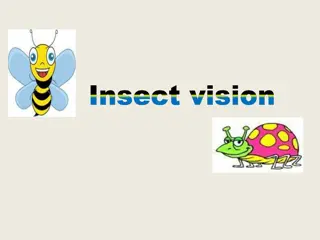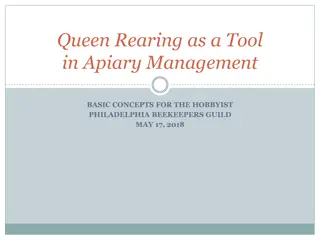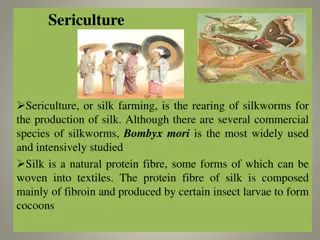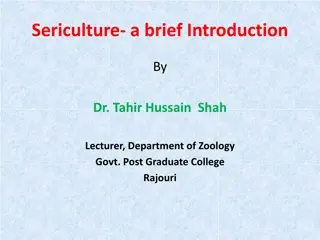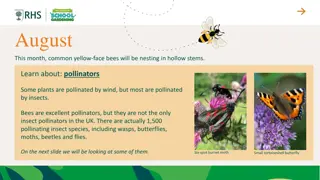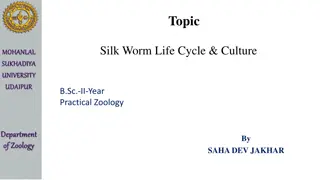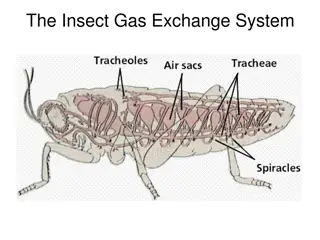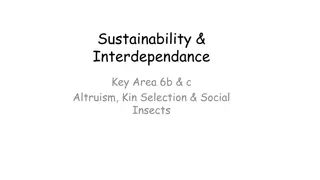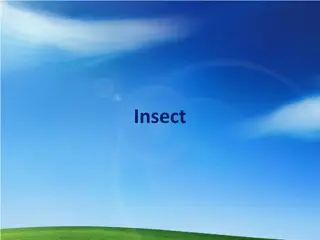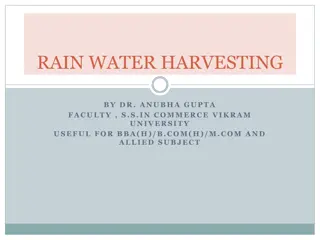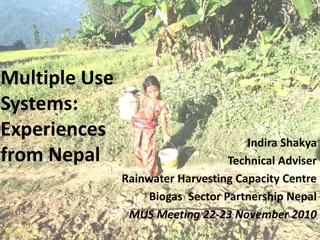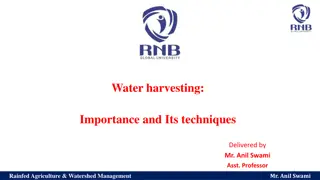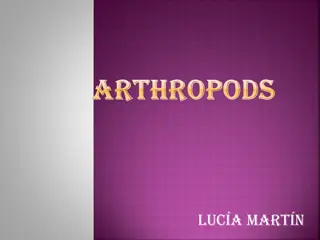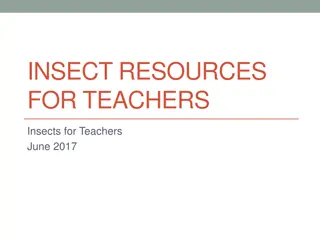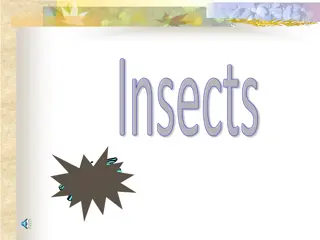The Fascinating World of Sericulture: Rearing and Harvesting Silk Insects
Sericulture, the art of rearing and nurturing silk insects, has been practiced since ancient times, yielding the exquisite natural fiber known as silk. This fine material has captivated humans for its beauty and versatility. The process involves skill and scientific knowledge, with various types of silk such as Mulberry, Tasar, Eri, and Muga silk being recognized. The life cycle of silk moths reveals intricate details of their development, mating, and egg-laying stages. Explore the wonders of sericulture and the intricate journey of silk production from insect to luxurious fabric.
Download Presentation

Please find below an Image/Link to download the presentation.
The content on the website is provided AS IS for your information and personal use only. It may not be sold, licensed, or shared on other websites without obtaining consent from the author. Download presentation by click this link. If you encounter any issues during the download, it is possible that the publisher has removed the file from their server.
E N D
Presentation Transcript
Sericulture Rearing developing and looking after of silk insects is called as sericulture
Silk has been under use by human beings for various purposes since ancient time. Pure silk is one of the finest and most beautiful natural fibers of the world and is said to be queen of fibers. Due to its great value and usefulness there have been many attempts in various parts of the world for the large scale production of silk. like other farmings, agriculture and bussiness sericulture too involves skill and scientific knoweldge for rearing and development. Best part of this sericulture is that it involve little money
Types of silk Mainly four types of silk has been recognized. Mulberry silk : this silk is considered to be superior in quality than other silk types due to its shiny and creamy white colour. It is secreted by the caterpillar of bombyx mori which feed on mulberry leaves. Tasar silk : Antheraea paphia belong to the family saturniidae and common in China, India and Sri Lanka. The caterpillar feed on ber, oak, sal and fig plant. It is a wild variety of silk moth since long
Eri silk : it is produced by caterpillars of Attacus ricini which feed on castor leaves. Its colour is also creamy white . But is less shiny. Muga silk : Antheraea assama is also belong to the family of Saturniidae and is semi domesticated in nature. The native place of this species is Assam. Caterpillar of this worm feeds on Machilus plant.
Life cycle of silk moth The moth bombyx mori are pale, creamy and shiny. They are about 2.5-3cm.long robust and cover with hairs. Body is well divided into head thorax and abdomen. Head is big with well marked compound eyes. Thorax is strong muscular three segmented structure , two pairs of wings and three pairs of legs. The abdomen is covered with scales and is highly extended in females.
They mate only few hours after birth and start laying eggs. The males are smaller and tender whereas females are strong and stout. Females have life span of 2-3 days. Whereas male have even less days to live. Once copulated female can lay egg, all fertilized till she dies. One moth rays 400 to 500 eggs depending upon climate.
Eggs ; eggs are rounded and white in colour , weight of newly laid 20000 eggs come to 1 gram Caterpillar : tiny caterpillars which hatches from egg measure 5-7 mm in length. Their body is wrinkled and rough and greyish in colour. Abdomen have 10 segments and have 5 pairs of unjointed prolegs or pseudolegs.
Larva feeds on mulberry and grow very quickly. They stop feeding after four to five days and become inactive and then first moulting takes place. At second stage, larva become bigger in size . They also eat for 7 days and then second moulting take place. Third stage larva formed. Larva repeats this process for 4 times. Salivary glands secrete silk hence called silk gland
Pupa : the fully formed 5thinstar larva undergo some changes and become restless it constantly rotates its head at its axis and in meantime saliva comes out through small pores known as spinneret Silk is wrapped around body almost at an average speed one round per second. This is done for 2-3 days.
Cocoon : cocoon is the white bed of pupa whose outer threads are irregular while the inner threads are regular.
Tools and measurements Machana: the proper place for rearing the silk worms Rearing trays : for keeping the laid eggs along with the mulberry leaves Spining or chandrakis tray : for keeping the caterpillars at the time of full grown stage ready for pupation Dalas : for fetching the mulberry leaves into smaller pieces. Baskets : Hygrometer Thermometer Oven freezer
Rearing of silk worm It is the most important aspects requiring great skills, patience vigilance and cleanliness. Process involve 5 stages Supply of eggs the quality of seeds used is very important Incubation of eggs the period for incubation for uni and bi voltine eggs begins when the eggs are taken out of cold storage whereas for multi voltine eggs the period of incubation start after the eggs are laid.
Brushing of worms Brushing is the process of separating of newly brushed worms for the shells of their eggs by means of feather and collecting them. Rearing of worms It requires the following Rearing room : it should be well ventilated away from kitchen and protected against direct sun Rearing appliance Wooden box Chopping knifes Door curtains
Leaves and their preservation The best time for plucking of leaves is evening For preservation leaves should be kept in baskets
Feeding Healthy development of worms depends upon feeding with leaves. They require well chopped leaves. Cleaning The cleaning of trays to remove the excreta of silkworm
Spacing The growth of silk worm is quick and remarkable. over crowding of worms should be avoided Mounting and harvesting When the silk worm is fully grown its appetite fails and start moving and find place for cocoon spinning. Spinning of cocoon





